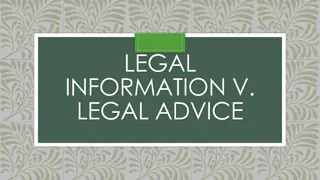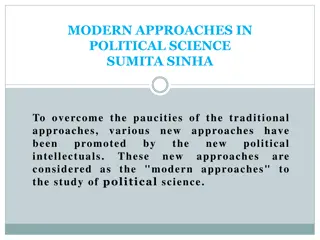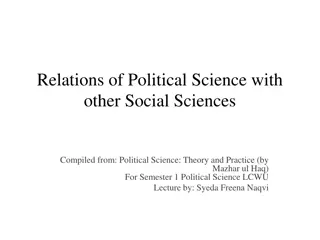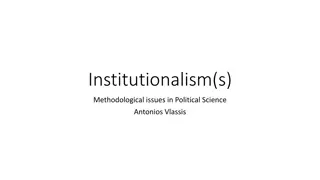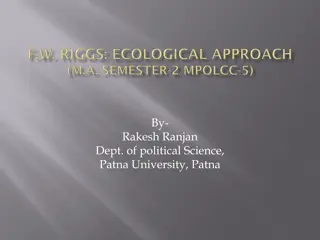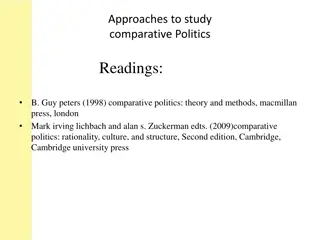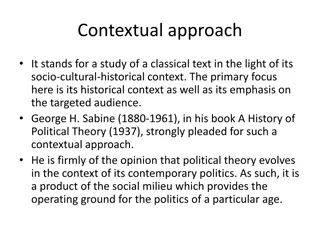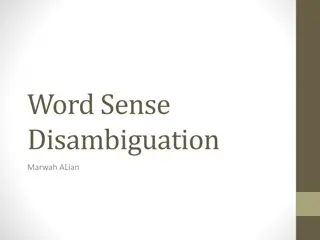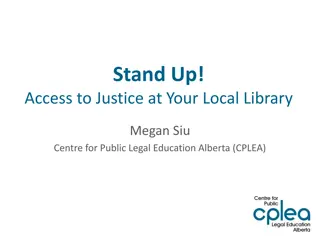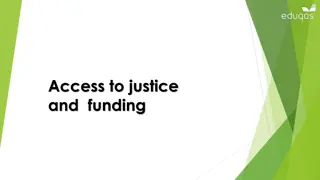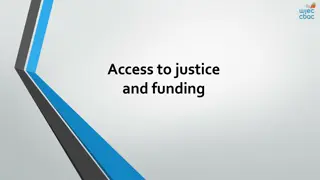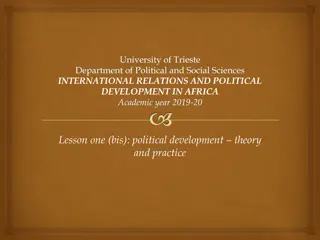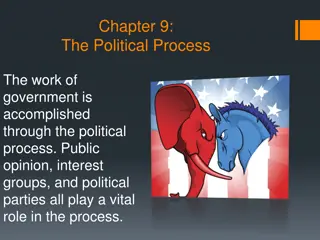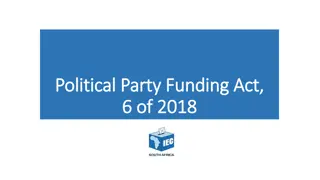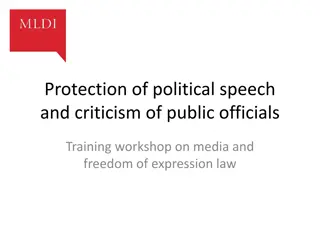Managerial, Political, and Legal Approaches in Public Administration
Public administration is viewed through three main approaches: managerial, political, and legal. The managerial approach minimizes the distinctions between public and private administration, focusing on efficiency and bureaucracy.
Download Presentation

Please find below an Image/Link to download the presentation.
The content on the website is provided AS IS for your information and personal use only. It may not be sold, licensed, or shared on other websites without obtaining consent from the author. Download presentation by click this link. If you encounter any issues during the download, it is possible that the publisher has removed the file from their server.
E N D
Presentation Transcript
Introduction Public administration lacks coherence because it has number of complex functions. So on the whole there are three approaches to view public administration which emerged out of its functions. One approach which views public administration consisting of practices similar to private sector is managerial approach . Political approach stresses on the publicnessof public administration. Legal approach emphasizes upon the importance of sovereignty, constitutions and regulations in public administration. Each of these approaches has different way to look at different values, procedural and structural arrangements, citizen and on the knowledge development.
The Managerial Approach to Public Administration Those who define public administration in managerial terms tend to minimize the distinctions between public and private administration. The managerial approach is further divided into two main groups i.e. traditional managerial approach and New Public Management. Each of these prevail in some organizations.
The Managerial Approach to Public Administration Traditional Managerial Approach to Public Administration The reason given by civil service reformers back in nineteenth century was to introduce this approach to combat inefficiency, corruption and emergence of spoilsmen. To make government working apolitical, businesslike approaches were proposed to be adopted in public sector. This approach aligned with the politics-administration dichotomy i.e.re endorsement of the idea given by Woodrow Wilson. In other words, this approach was geared towards the maximization of 3Es. It deemphasized law.
The Managerial Approach to Public Administration Organizational Structure To achieve the values of traditional managerial approach, bureaucratic structure was identified. Because, bureaucracy emphasizes upon division of labor which will increase efficiency. Specialization will again help employees to become expert in their own areas, specialization requires coordination and in bureaucracy, hierarchy serves this purpose. Hierarchy requires all the functions, duties to be clearly spelled out i.e. along formalistic lines and this requirement is also satisfied through bureaucratic arrangement. Under this setting, position classification according to the scientific principles and selection of employees on merit and fitness were the hallmark principles of this approach.
The Managerial Approach to Public Administration View of the Individual Traditional managerial approach promoted the impersonal view of the individuals regardless of their status. Dehumanization was considered as a special to prevent irrational emotions coming in the way of job performance. The focus was that an employee has to adapt to the machine and not the vice versa. Clients and victims too have been depersonalized to promote the values of 3Es.
The Managerial Approach to Public Administration Cognitive Approach The traditional managerial approach focused emphasized on the scientific method for the development of knowledge. The approach is deductive Budgeting To enhance the values of 3Es, traditional managerial approach focused on the budgeting system which is cost- effective. Decision Making Under this approach, public administrators should explore all possible alternatives to choose the one which is cost effective. This does not favor broad public participation.
New Public Management (NPM) This approach (emerged in 1990s in US)was also reform oriented which aims at improving performance in public sector. This approach focused on following premises Result oriented; Market like approaches for the provision of goods and services; Treating citizens and clients like customer; Government should steer rather than rowing; Government should be regulated; Employee empowerment;
New Public Management Public administration culture should be anti bureaucratic. Politics-administration dichotomy still prevailed in this approach. Organizational Structure Organizing public agencies like firms in the market Stress on decentralization, flatter organization and autonomy. Team working, use of information system for service tracking, less distinct boundaries between public agencies and environment.
New Public Management View of the Individual This approach stresses upon customerization . Customers could be both internal and external. Cognitive Approach NPM relies heavily on public choice theory. It focuses on developing quantitative indicators to measure performance. Budgeting It encourages administrative agencies to generate their own revenues. Legislative appropriations should be based on performance, value for customer. Enough autonomy in using budgets.
New Public Management Decision Making Decision should be based on responsiveness to customers, performance levels, and cost effectiveness. And, it should be decentralized.
Political Approach to Public Administration Public administration is ultimately a problem in political theory : the fundamental problem in a democracy is responsibility to popular control; the responsibility and responsiveness of the administrative agencies and the bureaucracies to the elected officials is of central importance in a government based increasingly on the exercise of discretionary power by the agencies of administration (Wallace Sayre). Public administration has been called as political process by Appleby and other scholars have focused attention on the role played by public administrators in policy making.
Unlike managerial approach which emphasizes upon what ought to be , political approach stresses upon empirical evidence . Political approach to public administration stresses upon the values of representativeness, political responsiveness and accountability through elected officials to the citizenry. The political approach to public administration is frequently in tension with the traditional managerial and NPM approaches like efficiency effected by sunshine law, similarly citizen participation and consultation is time consuming and costly. NPM focusing on results tend to eliminate accountability mechanisms.
Organizational Structure The political approach stresses on the pluralism since executive branch is the microcosm of our society. The basic rationale behind pluralism within public administration is that the executive branch is the policy making center of the government and to counteract every group or segment of the society. While achieving this end structure of public administration becomes politicized and it has been widely denounced as making government unmanageable, costly and inefficient. View of the Individual The political approach to public administration tends to aggregate individual into a broad social, economic or political group. As a member of that particular group, individuals are considered as the targets or beneficiaries of public policies.
Cognitive Approach Political approach views science as an appropriate way of developing knowledge. This approach looks for consensus as a primary technique for gaining relevant information. Budgeting Allocation of budget on political values , not on how money will be used or best satisfy the needs of the individuals. The approach to budgeting is incrementalism or decrementalism . Decision Making Decision is made on the basis of support/opposition rather than cost- effectiveness or scientific analysis. And the second source is opinion of public, interest group or media.
Legal Approach to Public Administration It views public administration as applying and enforcing the law in concrete circumstances. This approach is derived primarily from three interrelated sources Administrative law; Judicialization; Constitutional law. Legal approach emphasizes the rule of law. It manifests several values like procedural due process, substantive rights and equity. Organizational Structure Full-fledged judicial trial. Independent judge might lack technical expertise To avoid confusions, Alternate Dispute Resolution (ADR): Negotiation, Meditation, Arbitration can be used.
View of Individual In the light of procedural due process, equity and substantive rights, it leads to consider each individual as a unique personality. Cognitive Approach The legal approach favors adjudication as a method of developing knowledge. It is inductive. Decision Making This approach follows the principle of precedential incrementalism Budgeting This approach stresses upon constitutional integrity and the need to protect constitutional rights.











